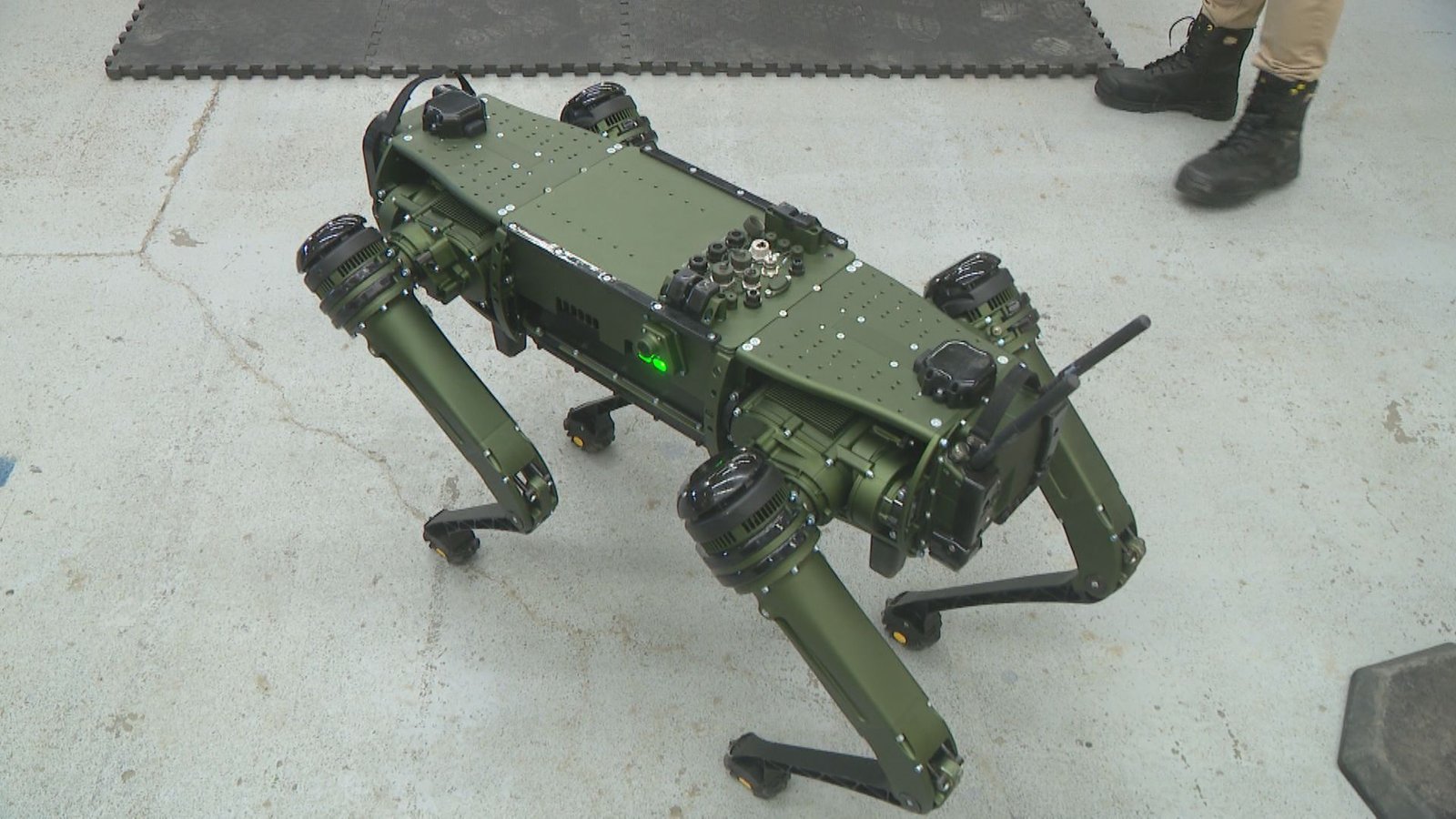Dogs have been around for thousands of years. But heading into the future, the furry canine might not have much fur at all as its robot counterpart continues to evolve.
A recently purchased state-of-the-art robotic dog is changing education at Saskatchewan Polytechnic’s Digital Integration Centre of Excellence (DICE).
The dog, known as Strider, can roll over, fetch (with the help of a robotic arm) and navigate hazardous terrain. Strider can also perform tasks such as inspections, surveillance, mapping and security.
DICE will use the dog for applied research and fee-for-service projects, providing “valuable support to Saskatchewan’s agriculture, energy, mining and other industries,” according to the institution.
“(Strider is) providing both tools for our students to learn and for our industry partners in research,” DICE director Terry Peckham said.
“It’s giving them access to tools they may not be able to afford to prototype out ideas to see if this is really a path they want to go down with certain technologies, depending on what they’re looking at.”
The robotic dog’s given name is Vision 60 Q-UGVs, or quadrupedal unmanned ground vehicle.
Mackenzie Mazankowski / Viewer Submitted
Brady Warford, a computer systems technology graduate of Saskatchewan Polytechnic, is one of the first people to work on Strider’s programming to help it grow and learn.
Warford said the work involves “adding automation” and building a “knowledge base for our future projects.”
“I’ve been doing a lot of documenting and just figuring out how to access some of these things and how to make it move,” Warford added.
Trending Now
Trump tariffs on Canada ‘paused’ for 30 days after border commitments
Should Canada ban X and Tesla? Why calls are growing
But even just the simple tricks are incredibly cool for him.
“I really like when it goes up the stairs,” Warford said. “Every time, even now, when it goes up, I’m just pumped. It’s super cool.”
A lot of work still needs to happen for Strider to achieve its full potential, but Saskatchewan Polytechnic is confident that one day soon, it will be able to carry out tasks that are too dangerous for humans.
“One particular case would be like a lighter unit, which would then scan a room and check out for safety in a newly constructed area to confirm it is safe for people to enter prior to letting people in,” Peckham said.
“We’re also looking at working with some small companies that do high voltage inspection.”
Another area of interest Peckham pointed to is mining potash, saying Strider could one day use its scanners to predict when mine walls will collapse — saving lives and money.
Strider’s research potential is vast and much of it remains untapped, those involved with the project say.
“I might cry a little bit when I’m off this project,” Wadford said. “Not actually, but I’m going to miss it. It’s been really cool to be able to work on it.”
© 2025 Global News, a division of Corus Entertainment Inc.


